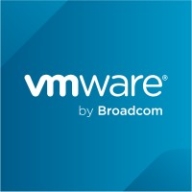

Cisco UCS Director and VMware Tanzu Platform are cloud management and application modernization solutions. VMware Tanzu Platform offers superior features that justify its higher cost compared to the budget-friendly Cisco UCS Director, noted for its cost-effectiveness and support.
Features: Cisco UCS Director provides orchestration of IT processes, unified infrastructure management, and resource provisioning with automation. VMware Tanzu Platform offers modern application support, container orchestration, and robust microservices capabilities for DevOps and continuous integration.
Room for Improvement: Cisco UCS Director could improve scalability, integration with non-Cisco systems, and user interface enhancements. VMware Tanzu Platform might benefit from simplified deployment processes, reduced resource requirements, and streamlined integrations with third-party systems.
Ease of Deployment and Customer Service: Cisco UCS Director features a straightforward deployment process and reliable customer support, which suits IT teams of varying skill levels. VMware Tanzu Platform has a complex deployment due to its extensive features but provides extensive guidance and support for managing modern application stacks.
Pricing and ROI: Cisco UCS Director is cost-effective with a quick ROI due to its lower setup costs and resource management capabilities. VMware Tanzu Platform requires a significant investment but is seen as worthwhile for its long-term benefits and application modernization capabilities that improve development speed and scalability.
| Product | Market Share (%) |
|---|---|
| Cisco UCS Director | 1.4% |
| VMware Tanzu Platform | 1.1% |
| Other | 97.5% |


| Company Size | Count |
|---|---|
| Small Business | 4 |
| Midsize Enterprise | 1 |
| Large Enterprise | 11 |
| Company Size | Count |
|---|---|
| Small Business | 10 |
| Midsize Enterprise | 3 |
| Large Enterprise | 10 |
Cisco UCS Director enables automated delivery of physical and virtual data center resources, empowering data centers to move at the speed of business.
VMware Tanzu Platform is designed for cloud-native development and management of Kubernetes, CI/CD processes, microservices, and containerized workloads. It supports deployments both on cloud and on-premises, providing centralized management via Mission Control.
VMware Tanzu Platform offers seamless integration with vSphere, ESX, and vSAN, supporting centralized cluster management and lifecycle management. The platform provides a GUI for monitoring CI/CD pipelines and network policies, enhancing multi-tenancy and Day 2 operations. Users can easily manage Kubernetes clusters, monitor applications, and integrate with tools such as GitHub, GitLab, Cloud Foundry, and Azure. It ensures compliance and security for service providers, financial institutions, and businesses.
What are the key features of VMware Tanzu Platform?
What benefits and ROI should users look for in VMware Tanzu Platform reviews?
Industries such as financial institutions, service providers, and businesses requiring rigorous compliance and security deploy VMware Tanzu Platform. These entities benefit from centralized management, streamlined DevOps processes, and integrated tools, enhancing their capabilities in cloud-native developments and containerized workloads.
We monitor all Cloud Management reviews to prevent fraudulent reviews and keep review quality high. We do not post reviews by company employees or direct competitors. We validate each review for authenticity via cross-reference with LinkedIn, and personal follow-up with the reviewer when necessary.